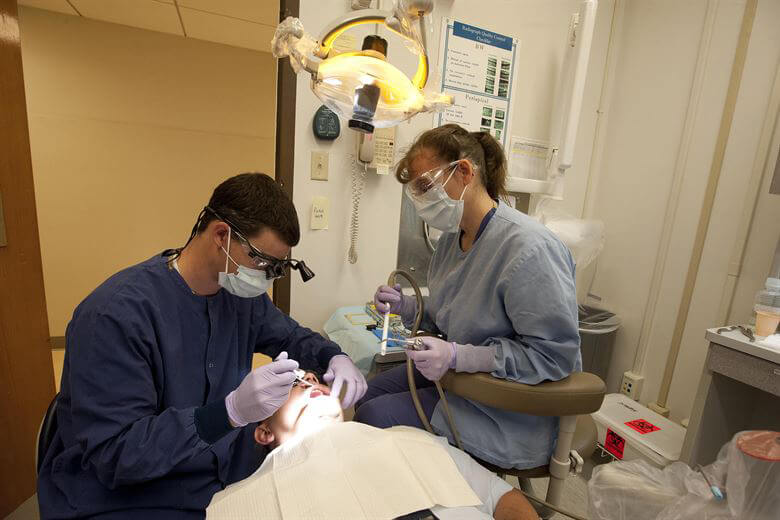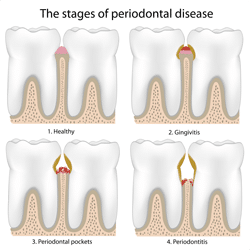
What Is a Periodontist And What Do They Do?
Periodontists – What Do They Do
Contents
A periodontist is a dental specialist who diagnoses and treats issues relating primarily to the gums and other tissues in the mouth. There are various forms and severity of gum disease. Gingivitis, the most common form of gum disease, is estimated to affect nearly half of the U.S. adult population, with some experts suggesting an even more significant number. A more severe form of gum disease, known as periodontitis, is an advanced stage of gingivitis, affecting roughly 25% of adults. The gums are a vital component of oral anatomy, as they are the foundation of healthy teeth. Needless to say, the field of periodontology is more relevant than ever before.
What is a Periodontist?
A periodontist is a specialized dentist who focuses on the prevention, diagnosis, and treatment of periodontal (gum) disease and the placement of dental implants. They are experts in treating gum-related diseases and conditions, such as gingivitis, periodontitis, and other forms of gum disease. Periodontists are highly trained in the latest techniques and procedures for gum disease treatment.
They can provide a variety of treatments, including scaling and root planing, laser gum surgery, gum grafting, and periodontal maintenance. Periodontists also specialize in the placement of dental implants, which replace missing teeth and restore the appearance and function of the mouth. They also provide cosmetic treatments, such as gum contouring and reshaping, to improve the appearance of the gums. Periodontists are an essential part of the dental team and are committed to helping patients maintain healthy gums and teeth.
Requirements
To become a periodontist, dental school graduates must complete an additional three years of training, during which time they learn numerous techniques for treating gum disease. One standard and the longstanding procedure is known as scaling and root planing. Different from a standard tooth cleaning, scaling and root planing consist of removing hard tartar and calculus from the teeth above and below the gum line. Once complete, the teeth are “planed,” or smoothed, so the surrounding gums can reattach to the teeth, preventing further infection.
Laser Gum Surgery
Laser gum surgery is a minimally invasive procedure that can help to improve the health of your gums. It is a great option for those who suffer from gum disease, as it can help to reduce inflammation and eliminate bacteria that can cause infection. During the procedure, a laser removes the infected tissue from the gums, allowing healthy tissue to grow back in its place. This can help to reduce the risk of further infection and improve the overall health of your gums.
Laser gum surgery can help reduce the pain and discomfort associated with gum disease, as the laser can target and remove the infected tissue without causing any damage to the surrounding healthy tissue. This can help reduce the time needed for recovery, allowing you to return to your normal activities faster. Laser gum surgery is a safe and effective way to improve the health of your gums and reduce the risk of further infection.
Scaling and Root Planing
Scaling and root planing is a common dental procedure used to treat periodontal disease. This procedure involves the removal of plaque and tartar buildup from the teeth and roots of the teeth. The goal of this procedure is to remove the infection and inflammation caused by the bacteria in the plaque and tartar. During the procedure, the dentist will use specialized tools to scrape away the plaque and tartar buildup. Once the plaque and tartar have been removed, the dentist will smooth out the teeth’ roots to prevent future buildup.
This procedure can help reduce periodontal disease symptoms, such as bleeding gums, bad breath, and loose teeth. It can also help to reduce the risk of tooth loss due to periodontal disease. Scaling and root planing is an integral parts of maintaining good oral health and should be done regularly to help keep your teeth and gums healthy.
Gum Disease
 For hundreds of thousands of patients, gum disease progresses to the point that more advanced treatment is necessary. The receding of gums is one of the tell-tale signs of gum disease. A periodontist may perform a free gingival graft to replace lost gum tissue. This procedure involves removing a thin strip of tissue from the upper portion of the gums or the roof of the mouth. The strip is then attached and sutured to a portion of the teeth exposed due to gum recession. This implanted tissue seamlessly integrates and grows normally once it is in place. This procedure has a very strong prognosis in treating advanced gum disease.
For hundreds of thousands of patients, gum disease progresses to the point that more advanced treatment is necessary. The receding of gums is one of the tell-tale signs of gum disease. A periodontist may perform a free gingival graft to replace lost gum tissue. This procedure involves removing a thin strip of tissue from the upper portion of the gums or the roof of the mouth. The strip is then attached and sutured to a portion of the teeth exposed due to gum recession. This implanted tissue seamlessly integrates and grows normally once it is in place. This procedure has a very strong prognosis in treating advanced gum disease.
Dental Implants
Increasingly, many gum specialists are placing dental implants. These prosthetic teeth are a rapidly emerging alternative to dentures, as they are much more strong and more effective. Due to the relatively complicated procedure of placing dental implants and the considerations required for the surrounding bone and tissue, dentists trained in gingival physiology are highly qualified to place implants. Some candidates for dental implants may first require a bone graft or a free gingival graft to provide ample substrate for anchoring the implant. These highly trained specialists are equally capable of performing both.
Procedure Costs
Due to the surgical nature of the work performed by a periodontist, their fees can be significant. Free gingival grafts and bone grafts often cost upwards of several thousand dollars. Similarly, dental implants can cost $3,000 per tooth or more, depending on the case’s complexity. Scaling and root planing is more affordable, usually around $1,000 for the entire mouth, although this figure may be much less in rural areas. The good news is that many insurance plans offer significant coverage for these treatments, significantly scaling and root planing since these procedures are essential for oral health. However, keep in mind that dental implants are rarely covered by insurance. If your gums are suffering, do not fear. A gum specialist can make your gums pink and healthy with a few simple procedures.
Conclusion
Periodontists are specialized dentists who specialize in preventing, diagnosing, and treating diseases that affect the gums and other structures that support the teeth. They provide a wide range of services, including periodontal scaling and root planing, gum grafting, dental implants, and cosmetic procedures. Periodontists are experts in diagnosing and treating gum disease, an infection of the gums that can lead to tooth loss and other serious health problems. They also work to prevent gum disease by providing preventive care, such as regular cleanings and check-ups. In addition, periodontists can provide treatments to help patients with advanced gum disease, such as laser therapy and bone grafting. Periodontists are also skilled in placing dental implants, which can replace missing teeth and improve the appearance of a person’s smile. Finally, periodontists can provide cosmetic procedures, such as gum contouring and crown lengthening, to improve the appearance of a person’s smile.

